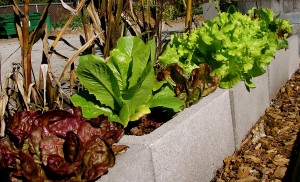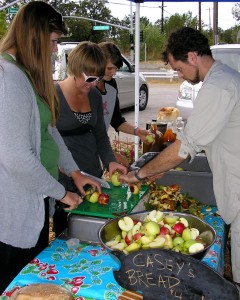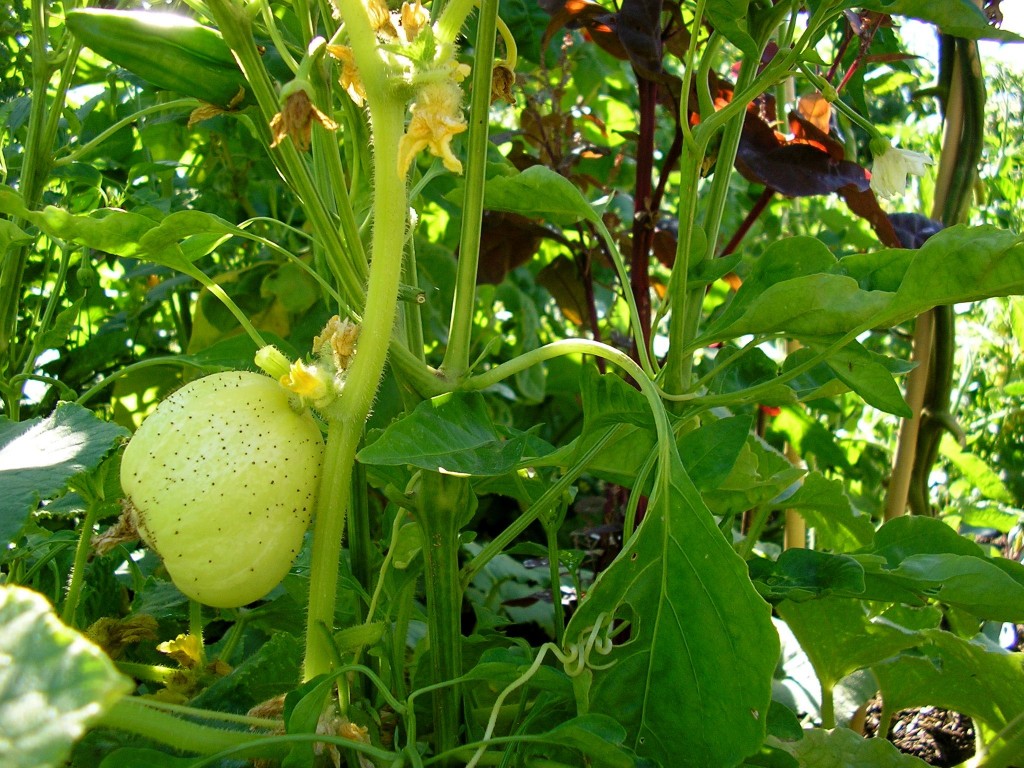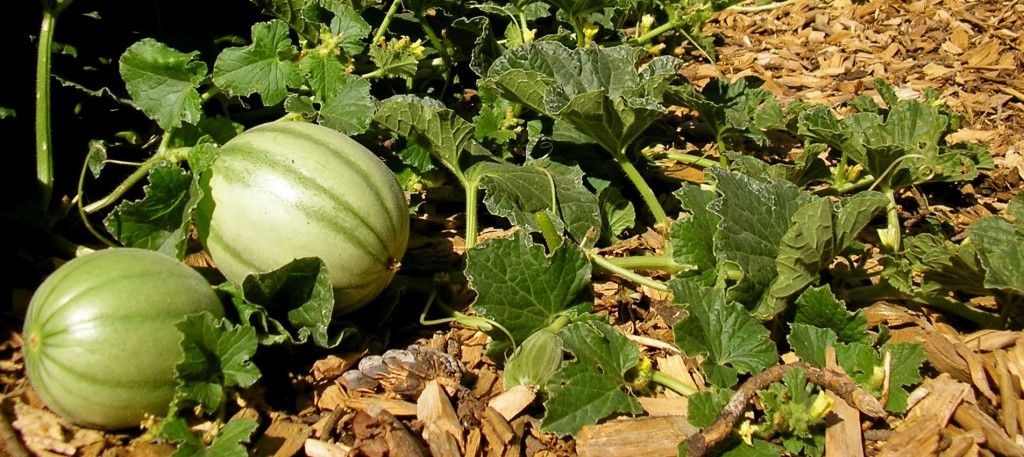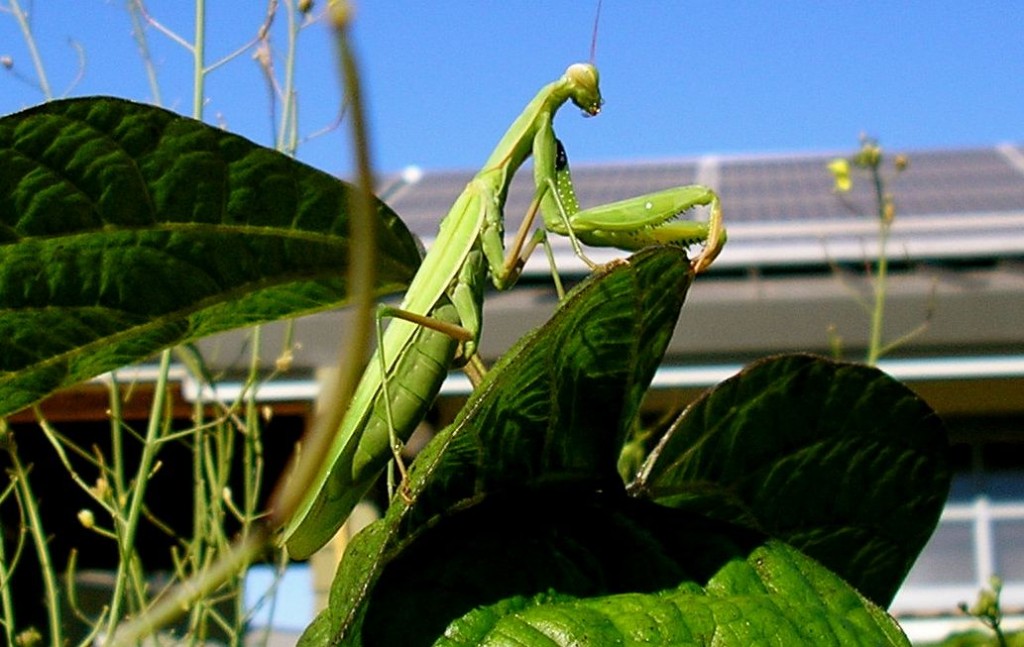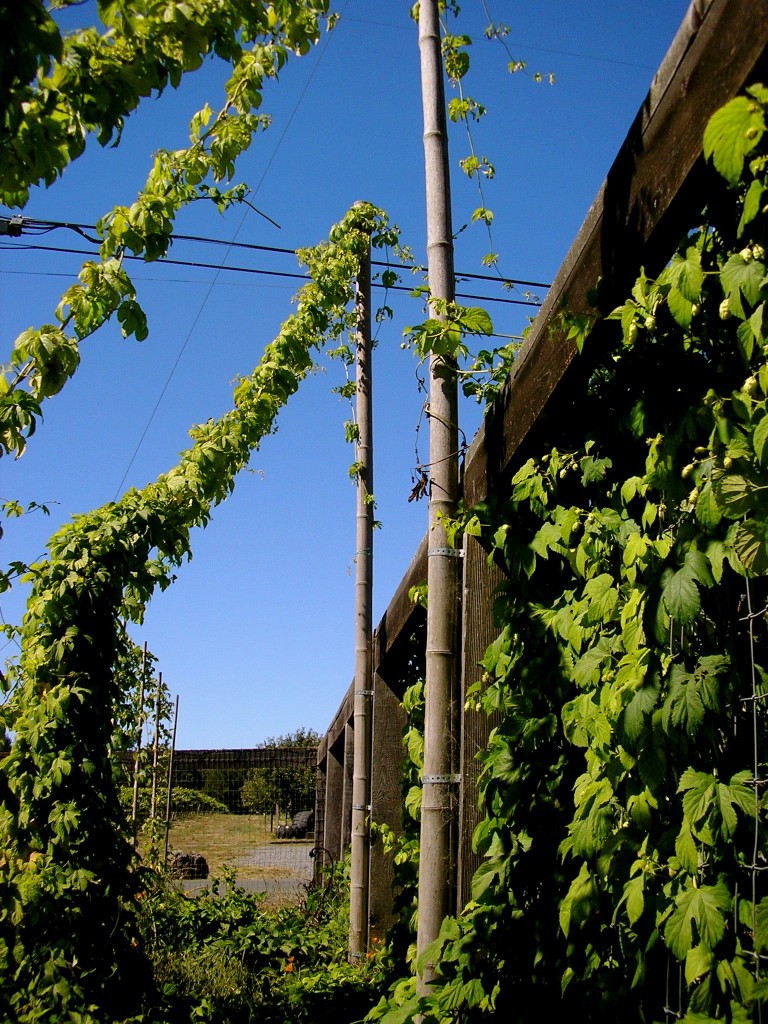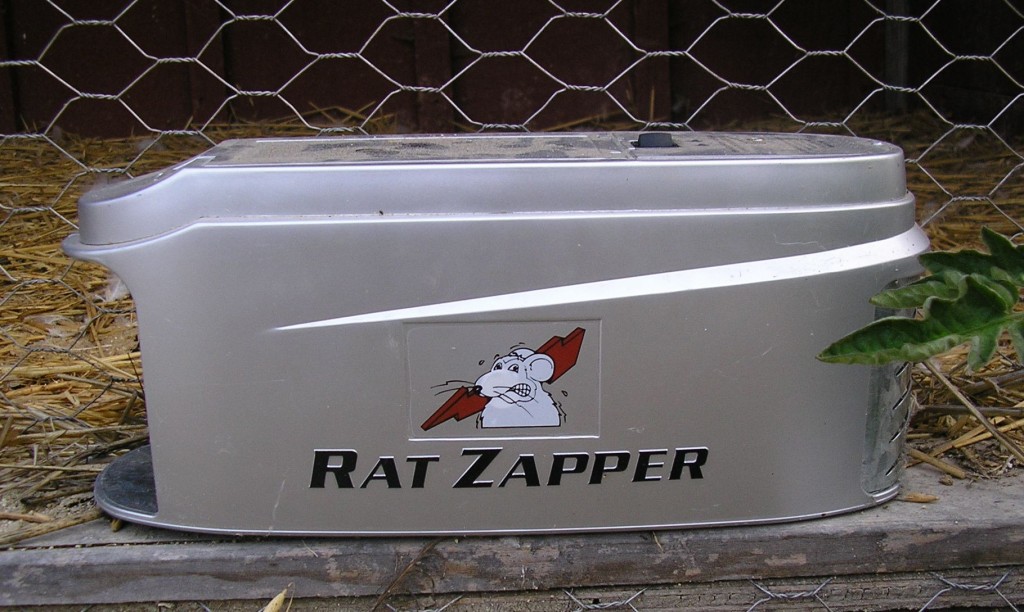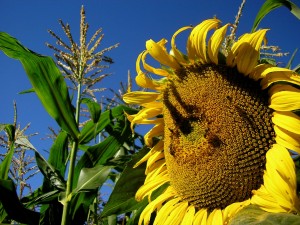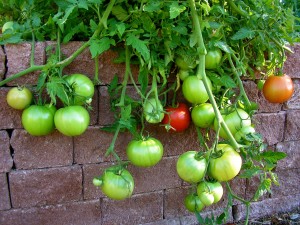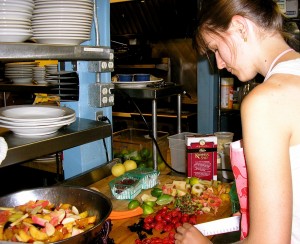As the days and nights grow cooler, so does the soil, and this slows the growth of plants. This is why most commercial greenhouses use heat mats to heat soil and stimulate growth. There are a number of ways you can achieve warmer soil without using electricity. Perhaps the cheapest is to plant in cinder blocks. These blocks collect heat during the day and then radiate it during the night. They also provide excellent drainage. These $2 blocks also work well as the walls of a raised bed, with or without mortar. I have planted lot’s of different starts in cinder blocks at zazu, and they have grown much faster than the ones I planted at the same time in the ground. I’ve also been experimenting with planting in pure compost or manure, which seems to work well. Starting this week, restaurant patrons will be able to pick their own lettuce before dinner for a salad with asian pears.
Page 6 of 12
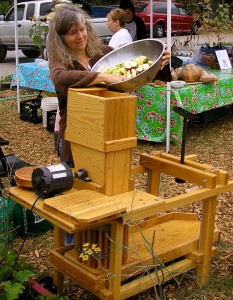 Despite the gloom, everyone had a blast making cider today. We had lot’s of kids and adults helping to process and press cider out of a diverse bounty of fresh apples. Nothing beats the taste of fresh homegrown cider, and making it is just as enjoyable. Kathy Klopp pressed some of her asian pears and my mom gave her some Mother so she can make vinegar out of the juice. Check out the Cider Making page (above) for more.
Despite the gloom, everyone had a blast making cider today. We had lot’s of kids and adults helping to process and press cider out of a diverse bounty of fresh apples. Nothing beats the taste of fresh homegrown cider, and making it is just as enjoyable. Kathy Klopp pressed some of her asian pears and my mom gave her some Mother so she can make vinegar out of the juice. Check out the Cider Making page (above) for more.
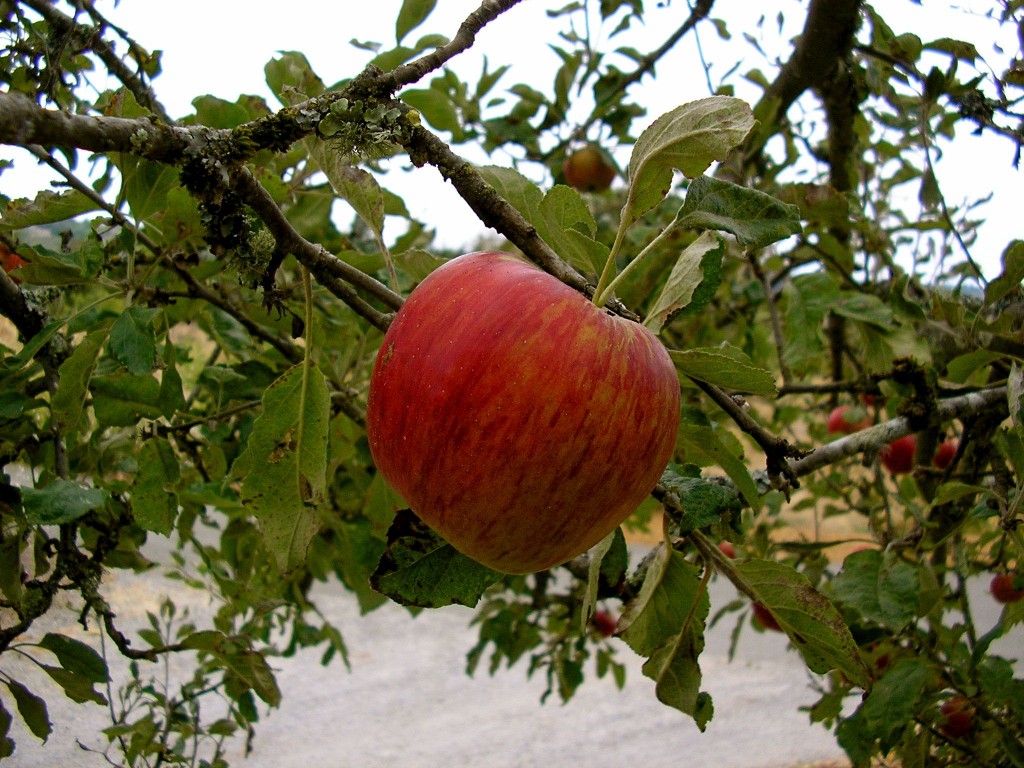
A ripe Jonathan apple in an old tree. As you can see, there's quite a bit of lichen on the branches.
Jonathan apples are semi tart and crisp. We have five of these trees at Rancho Pillow, which produce delicious apples without irrigation or fertilizer. We prune them once a year in January or February. They were sprayed once with copper and dormant oil (both organic) 2 years ago. Without regular spraying, we do have some issues with worms and scab, but we still harvest plenty of unblemished apples.
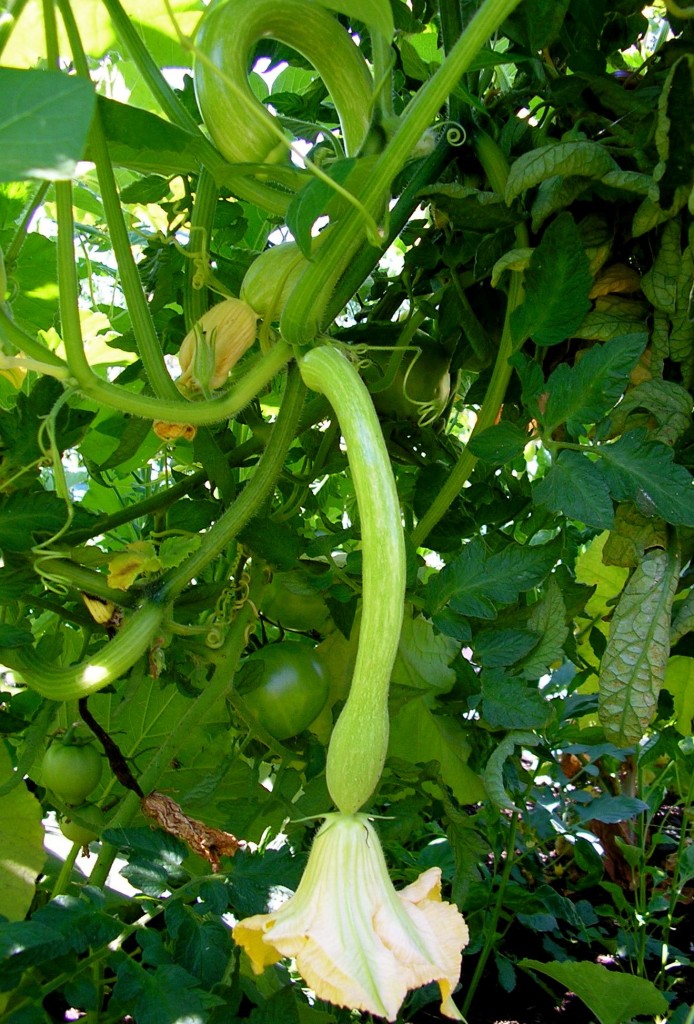
Trombolino squash growing into a tomato plant at zazu. These can be used like both summer and winter squash, and are remarkably meaty.
Cucumbers and squash will both climb if given the opportunity. These vigorous plants benefit from a vertical habit. The vegetables won’t rot like they often do on the ground and the plants will receive more even light. Small melons are another great candidate for vertical gardening. At zazu we are growing Charentais melons, which are the French version of a cantalope, except that they are smaller and sweeter. Melons require 60-90 days of warm weather to ripen, so I’m really hoping for another heat wave.
As I was harvesting the green beans this morning I noticed this noble praying mantis. I was thrilled to see this beneficial insect in the garden. I have seen a lot of garden predators this year, from this fellow to the gopher snake that has a den in my back yard.
This text is from: http://www.insecta-inspecta.com/mantids/praying/ When at rest, the mantis’ front forelegs are held up together in a posture that looks like its praying. These front legs are equipped with rows of sharp spines used to grasp its prey. They wait unmoving and are almost invisible on a leaf or a stem, ready to catch any insect that passes. When potential prey comes close enough, the mantis thrusts its pincher-like forelegs forward to catch it. The mantid bites the neck of its prey to paralyze it and begins to devour it. The mantis almost always starts eating the insect while it’s still alive, and almost always starts eating from the insect’s neck. This way, the mantis makes sure that the insect’s struggle stops quickly. Praying mantises eat insects and other invertebrates such as other mantises, beetles, butterflies, crickets, grasshoppers, and even spiders. The praying mantises also eat vertebrates such as small tree frogs, lizards, mice and hummingbirds.
The hop harvest is approaching, so Dale and I have been thinking up the best way to harvest and dry the hops at Rancho Pillow. We plan on building a rack in the greenhouse and covering it with canvas so that the UV won’t degrade the hops. After the first year, hops don’t require much care, though I have read that it’s good to prune the roots from time to time.
One the most effective method methods of rodent control is the Rat Zapper (ratzapper.com). It is a little electric chair for rats that runs on C batteries and can zap rats for months on one charge. I have zapped 7 rats in past 2 weeks alone. Rats and poultry go hand in hand, so I am always trapping around the coops and in the barn where we keep the food. If you are really serious about rat zapping you can purchase multiple units and a remote that alerts the user when a rat is zapped. I learned about this amazing invention from my mom, who is an expert in all things varmit related.
I picked around 20lbs of tomatoes at Rancho Pillow today. Sarah will be canning most of them on Wednesday as Dale is at Burning Man. We used minimal fertilizer this year in favor of mixing composted manure with native soil. The corn patch pictured below is just getting ripe. After many years of rototilling this garden, we decided to try digging in a winter fava bean crop instead, and the results have been surprisingly good. I did add a dose of EB stone veggie food under each drip emitter.
Last Saturday’s farm stand was another fun day in the garden. The Easy Leaves played an enthusiastic set, and we welcomed Oceana and Nubi with their wildcrafted seaweed products.
Sepetember schedule:
September 4th- Tomato Workshop- We demonstrate how to can and dry your harvest.
September 11th- Winter Fruit Workshop- Make a plan for how to preserve the winter bounty.
September 18th- Cider Making Workshop
September 25th- Redwood Hill Farmer Scott Bice brings his baby goats and talks about making goat cheese.
12 farms were represented at our second Farmer’s Brunch. We featured Sarah Silva and Marc Felton’s pastured chickens along with mushroom pizza and a tomato and chevre dish. Almost all of the ingredients were donated by the farmers. We had a productive discussion with insights from business leaders like Meg Hill of Gourmet Mushrooms, and input from sous chef Tara Wachtel who prepared the meal with Casey, my friend Andrew and my sister Sarah. Sarah will be coordinating the Fall Gardening Workshop on Saturday. Come for the beer and music, and be enlightened!
